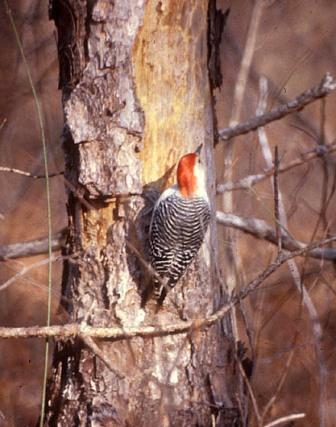 |
| (Center for Conservation Biology/W&M) | | Red-bellied Woodpecker in Petersburg National Battlefield. |
 |
From the majestic Bald Eagle to the Ruby-throated Hummingbird, Petersburg National Battlefield has recorded 142 avian species. Many of these species are migratory, and only stop at the battlefield during the spring or fall as they pass along their migration routes. Others, like the Pileated Woodpecker, make their homes in the park year-round.
Osprey, Bald Eagles, Fish Crow, and the state bird of Virginia, the Cardinal, are often seen at the City Point area of Petersburg National Battlefield. Located at the confluence of the James and Appomattox Rivers, this area is the perfect natural habitat for these beautiful specimens.
The Eastern Front’s grasslands and forests provide habitat for an abundance of birds. These include the Great Horned Owl, the Red-bellied Woodpecker, and the American Goldfinch.
Even the 8.7 acre Poplar Grove National Cemetery, where 6,142 soldiers (mostly from the Union side) are interred, plays host to many bird species. The Downy Woodpecker and Eastern Phoebe are two of the species that are known to frequent this hallowed ground.
In 2004 the battlefield documented its first pair of nesting Bald Eagles. These beautiful animals nested on Colquitt’s Salient, once a Confederate stronghold, and, in the spring of 2004 three eaglets were born.
| 





